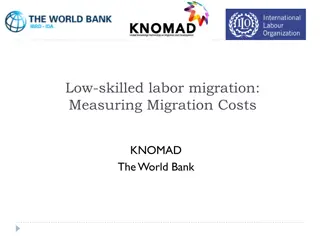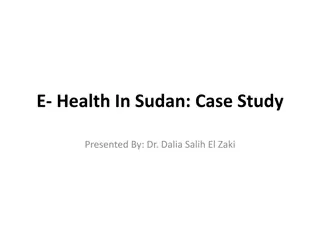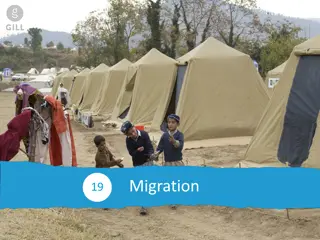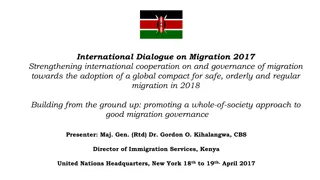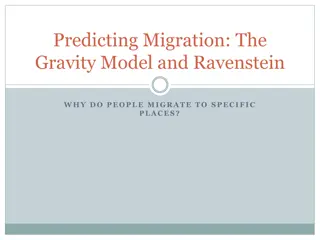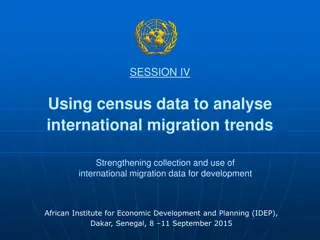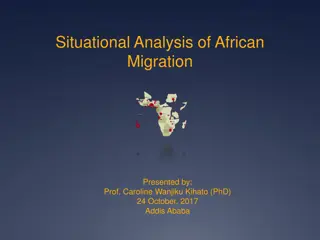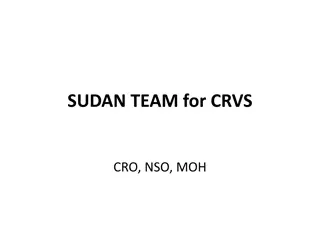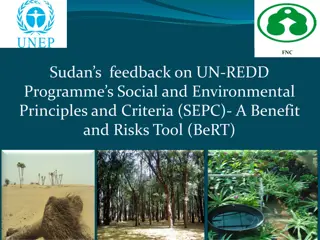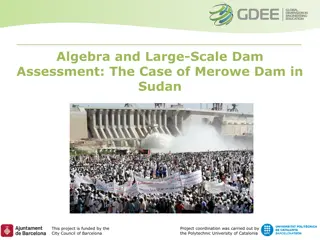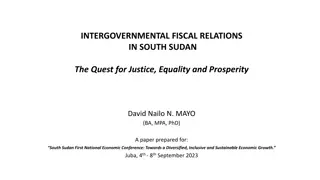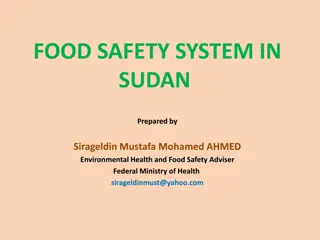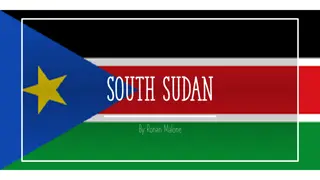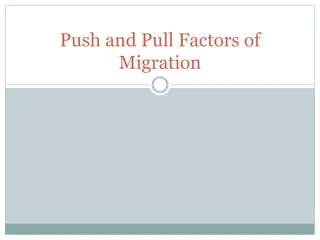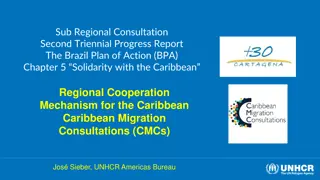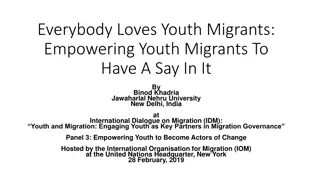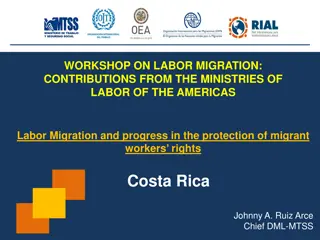Understanding Migration from Sudan to Chad: Causes, Consequences, and Refuge
Conflict in Sudan, particularly in Darfur, has led to mass displacement and migration to Chad, with over 300,000 Sudanese refugees still seeking shelter. The causes range from political instability in South Sudan to land rights issues in Darfur. The migration flow includes both forced migrants and those seeking better opportunities like education. The UNHCR provides essential services in refugee camps in Chad, offering shelter, food, and basic facilities to the displaced population.
Download Presentation

Please find below an Image/Link to download the presentation.
The content on the website is provided AS IS for your information and personal use only. It may not be sold, licensed, or shared on other websites without obtaining consent from the author. Download presentation by click this link. If you encounter any issues during the download, it is possible that the publisher has removed the file from their server.
E N D
Presentation Transcript
Migration - International, Temporary, Forced Sudan
What Happened? In 2003, conflict in Darfur led to the internal displacement of now more than 2 million people. Over 300,000 Sudanese refugees remain in Chad. The number of returnees, both through spontaneous and organised repatriations largely increased following the January 2011 referendum (to separate Sudan into Sudan and South Sudan), and subsequently following the declaration of independence in July 2011.
Volume The net migration rate from 2005-2010 was also stated to be 0.6 per 1000 people This figure refers to a combination of forced migration and those willingly looking for labour. As well as this approximately 2,900 Sudanese emigrate looking for better education, so we must also take this into account for building up this statistic The majority of migration flow from Sudan is to neighbouring African countries, especially Chad, Uganda, Egypt and Ethiopia These migrants will typically be those that are being forced to migrate as the neighbouring countries are the most accessible to Sudanese migrants, especially those that have been devastated by war and have little money to travel with, and many of these countries have refugee camps. Even today Uganda and Ethiopia are seeing around 2,400 migrants arriving in their countries after fleeing Sudan In 2007, 350,000 of the refugees who migrated to these neighbouring countries were still living in refugee camps despite over 50,000 migrants having returned to Sudan After 23,000 more refugees returned to Sudan, the UN refugee agency were able to close two camps in Western Ethiopia. However, Chad still contained about 300,000 Sudanese refugees in 2011 in 12 camps set up by the UNHCR along the Sudan-Chad border.
Causes People escaping internal conflict within South Sudan due to political instability In Darfur, small farmers and nomads lost land rights, as government gave itself the right to occupy and dispose of land from which displaced people had been driven. Rebel groups have contributed to the instability while being unable to offer sufficient protection to their civilian supporters. The southern border area with Uganda is destabilised by incursions of the Ugandan Lord s Resistance Army, which is backed by Sudanese government Droughts and famine are common in the region, as the process of desertification advances
Why Migrate To Chad? Moved to Chad because: United Nations High Commissioner for Refugees has given the Sudanese refugees shelter in 12 different camps situated along the Chadian-Sudanese border. 248,700 live in UNHCR camps Camps provide: medical centres, schools, markets with vegetables and goat meat. World Food Program trucks bring the food that are distributed on a monthly basis. Each family is provided a tent, which has an open fireplace for cooking and a storage place for firewood
Consequences Migrants put pressure on limited resources in Chad and Ethiopia (2million in Chad, 500,000 in Ethiopia). There are a number of consequences for Chad: The cost of policing and fighting the Sudan armies that have crossed international borders and attacked camps in eastern Chad. Refugees are stripping the land of vegetation for firewood and building materials for shelters. This has led to soil erosion and loss of farmland in Southern Chad around the refugee camps. The water table has lowered so badly in and around the eastern Chad camps that it now has to be transported there by truck. Since migrants have started to return to Sudan, there has been huge growth of cities such as Darfur. This is due to internal migration to the city and refugees returning. Poor conditions in refugee camps and an increased stability in South Sudan allowed many people to return, there are now only around 300,000 refugees in Chad.



